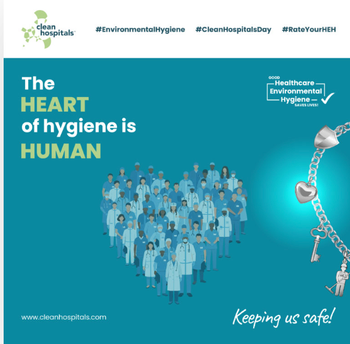
Medication Errors from Injectable Drugs Harm 1 Million Inpatients Each Year, Study Finds
A new study published by the journal American Health & Drug Benefits reveals the significant national burden that harmful medication errors, also called preventable adverse drug events (ADEs), associated with injectable medications have on hospitals, patients, and our healthcare system. Results show that preventable ADEs associated with injectable medications cost an average of $600,000 per hospital annually and impact more than 1 million patient hospitalizations each year.
Never before has a study looked specifically at ADEs from injectable medication errors and analyzed the related economic impact on patient hospitalization, cost per hospital, and overall cost to the healthcare industry. Major findings include:
 Preventable ADEs associated with injectable medications impact more than 1 million hospitalizations each year.
 Preventable ADEs due to injectable medications cause $2.7 billion to $5.1 billion in annual costs to U.S. healthcare payers. Those costs average $600,000 per hospital each year.
 The medical professional liability (MPL) cost for inpatient ADEs from injectable medication reaches an industry-wide $300 million to $610 million annually. The MPL costs an average of $72,000 per hospital each year.
Our study highlights an unnecessary source of wasted healthcare resources and poor outcomes injectable medication errors that cause harm to patients being treated in a hospital, says study author Betsy Lahue, MPH, vice president of health economics and outcomes research for BD. BD has long been a leader in safe drug delivery practices. New solutions to improve injectable medication processes are needed to minimize the burden on payers and reduce the risk for both the patient and the healthcare setting.
Commissioned by BD (Becton, Dickinson and Company) in partnership with Milliman Inc., the study was compiled from databases that contained information on medication error, inpatient medication use, and medical costs. The study applied the findings of the U.S. Department of Health and Human Services study on adverse events, and it used MPL databases and insurance rate information.
Our study used actuarial methods and pulled from multiple sources of data relevant to this critical issue which means that decision-makers can now see where the problems are and target prevention efforts, says author Bruce Pyenson, principal and consulting actuary at Milliman.
Preventable adverse drug events from injectable drugs have emerged as prominent cost and quality issues for the healthcare industry. This study explored the impact that harmful injectable medication errors in an inpatient setting have on U.S. healthcare costs. It revealed a high number of hospitalizations potentially impacted by harmful errors due to injectable medications and a serious economic burden on payers, hospitals and the healthcare industry associated with those preventable ADEs.
"In my patient safety work, I know that preventable adverse medication events are still a significant concern for nurses, physicians, pharmacists, hospitals as well as patients. Injectable medications, especially high risk medications, can result in the most severe harms associated with medication errors. Our study found an impressive cost burden that injectable medication errors have on the healthcare system," says Dr. Jeffrey Rothschild, co-author and associate professor of medicine at Harvard Medical School. "The good news is this is a problem that can be ameliorated. Now that we know more about the types of medications and illnesses most associated with these harmful errors, we can take steps to better focus our efforts to minimize the risks to patient care."
Authors of the study include Betsy Lahue, MPH of BD; Bruce Pyenson, FSA; Kosuke Iwasaki, FIAJ; Susan Forray, FCAS; Helen Blumen, MD of Milliman; and Jeffrey Rothschild, MD, MPH, associate professor of medicine at Harvard Medical School and Physician at Brigham & Womens Hospital.
Newsletter
Stay prepared and protected with Infection Control Today's newsletter, delivering essential updates, best practices, and expert insights for infection preventionists.





